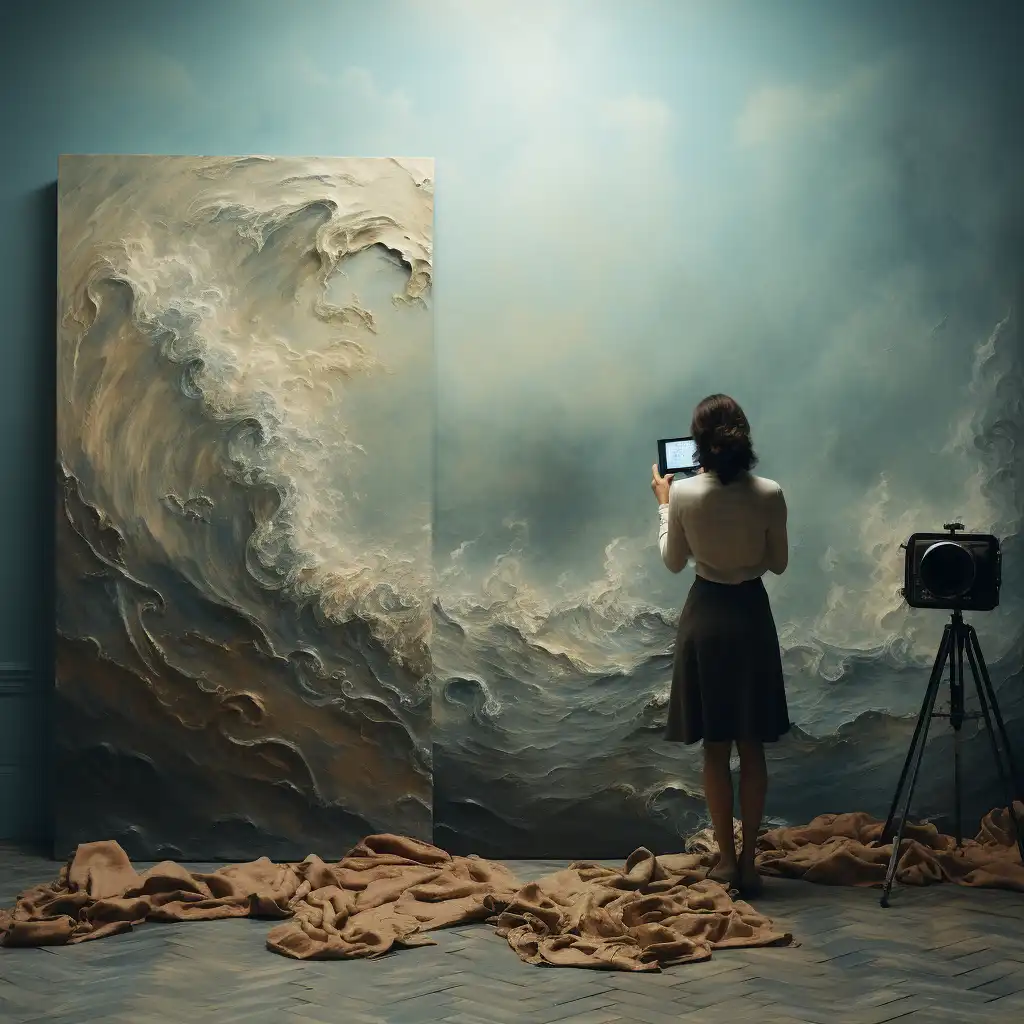Promoting Your Art Using Social Media

If you are an artist who wants to reach a wider audience and sell your work online, you might be wondering why you should use social media platforms for your marketing strategy. Social media has become a powerful tool for artists to showcase their work, connect with fans, network with other artists, and grow their reputation. In this blog post, we will explore some of the benefits of using social media for artists and how you can get started.
Benefits of Using social media for Artists
- Building a global following: social media allows you to reach people from all over the world who share your interests and appreciate your art. You can expose your work to new markets and potential buyers who might not otherwise find you through traditional channels. You can also interact with your followers in real-time, answer their questions, get feedback, and build relationships.
- Connecting with fans in real-time: social media enables you to communicate with your fans directly and instantly. You can share updates on your work, announce new projects, offer discounts or giveaways, and invite them to events. You can also use live streaming features to show your creative process, give tutorials, or host Q&A sessions. This way, you can engage your fans and make them feel more involved in your art journey.
- Networking with other artists: social media also helps you connect with other artists in your field or niche. You can follow their work, learn from their tips and techniques, collaborate on projects, or join online communities and groups. You can also support each other by sharing each other’s work, giving feedback, or participating in challenges and contests.
- Growing your reputation: social media can help you build your brand and reputation as an artist. You can showcase your portfolio, share your story and vision, and demonstrate your expertise and professionalism. You can also use social media to generate buzz and publicity for your work, attract media attention, or get featured by influential accounts or platforms.
- A measure of freedom from the gallery system: social media gives you more control and flexibility over how you sell your art online. You don’t have to rely on galleries or agents to represent you or take a cut of your sales. You can set your own prices, terms, and policies, and sell directly to your customers. You can also use various platforms and services to sell your original artwork, prints, digital files, or merchandise.
How to Get Started with Selling Art on social media
If you are ready to start selling art on social media, here are some steps you can take:
- Decide what art to sell and how to sell it: Depending on your medium, style, and goals, you can choose to sell original artwork, copies, prints, digital files, or merchandise. You can also decide how you want to sell it: through your own website or online store, through a third-party platform like Etsy or Society6, or through a print-on-demand service like Printful or Printify.
- Choose your social media platforms: Based on your target audience and preferences, you can select the social media platforms that suit you best. Some of the most popular ones for artists are Facebook, Instagram, Twitter, Pinterest, TikTok, YouTube, Behance, DeviantArt, and Reddit. You don’t have to be on every platform; focus on the ones where you can reach and engage your ideal customers.
- Create a consistent and attractive profile: Your social media profile is like your online business card. It should reflect your brand identity and personality as an artist. Use a clear and professional profile picture, write a catchy bio that summarizes who you are and what you do, include a link to your website or online store, and use relevant keywords and hashtags.
- Post high-quality content regularly: Your social media content is what showcases your work and attracts followers and customers. Make sure you post high-quality images or videos of your art that capture its details and colors accurately. Use captions that tell a story behind your work or invite feedback or questions. Use hashtags that describe your art and help people find it. Post regularly and consistently to keep your audience interested and engaged.
- Interact with your audience: One of the main advantages of social media is that it allows you to interact with your audience directly and personally. Respond to comments and messages from your followers and customers, thank them for their support, answer their inquiries, ask for their opinions or suggestions, or offer them exclusive deals or discounts. You can also use polls, quizzes,
Downside of Selling Art on Social Media
Social media platforms have become a popular way for artists to showcase and sell their work. However, there are also some drawbacks to using social media as a marketplace for art. In this section, we will discuss some of the cons of selling art on social media and how to overcome them.
One of the main challenges of selling art on social media is the competition. There are millions of artists on platforms like Instagram, Facebook, and Twitter, who are also trying to attract buyers and followers. This means that your art may get lost in the crowd or overshadowed by more popular or established artists. To stand out from the competition, you need to have a unique style, a consistent brand, and a strong online presence. You also need to engage with your audience, post regularly, and use hashtags and keywords to increase your visibility.
Another drawback of selling art on social media is the lack of control. When you sell your art on social media, you are subject to the rules and policies of the platform. For example, some platforms may censor or remove your content if it violates their terms of service or community guidelines. Some platforms may also take a cut of your sales or charge fees for using their services. Additionally, you have to deal with potential issues such as fraud, scams, plagiarism, or theft. To protect yourself and your art, you need to read and understand the terms and conditions of the platform, use secure payment methods, watermark your images, and register your copyrights.
A third disadvantage of selling art on social media is the quality. Social media platforms are designed for sharing images and videos, not for displaying high-resolution or detailed artworks. This means that your art may not look as good or as accurate as it does in real life. Moreover, some buyers may not trust or appreciate your art based on a digital image alone. They may want to see your art in person, touch it, or examine it closely before making a purchase. To overcome this challenge, you need to provide clear and professional photos of your art, include dimensions and descriptions, and offer refunds or exchanges if the buyer is not satisfied.


